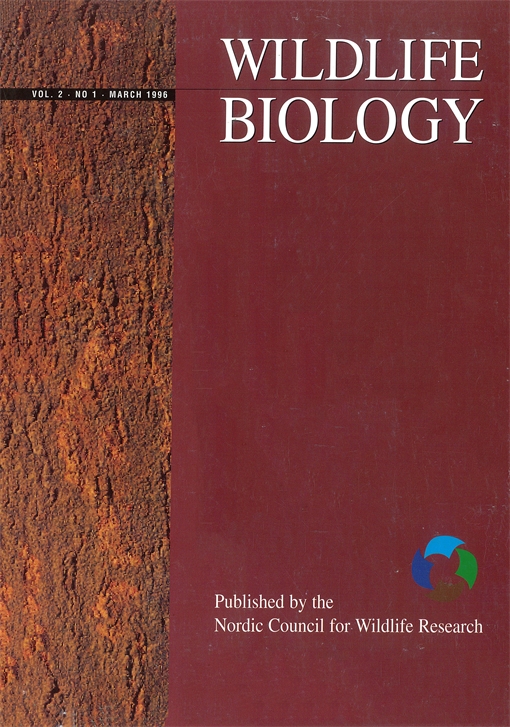In order to estimate the potential importance of each of the demographic traits egg, chick, and apparent winter survival on willow grouse Lagopus lagopus population dynamics, a sensitivity/elasticity analysis on a general model for the growth rate of breeding hen willow grouse numbers was performed. The demographic parameters used were taken from a 21-year study of willow grouse population dynamics on a Norwegian island. The growth rate of breeding hen numbers may be sensitive to changes in a parameter either because of the structure of the model or because of a substantial between year variation in the parameter. Therefore, three measures of parameter importance were used: sensitivity, elasticity and an actual elasticity coefficient (AE-coefficient). Sensitivity is an unsealed measure of the impact of a parameter, and thus cannot be used for comparisons between different parameters. Elasticity is a scaled measure of sensitivity allowing direct comparison between effects of different parameters on the growth rate (λ). To interpret the true effect of a demographic parameter on λ, between year variations in the parameter must be accounted for. The actual elasticity coefficient of each parameter is the product of the elasticity coefficient and the coefficient of variation, CV, for the demographic parameter in question. Sensitivity, elasticity and AE-coefficients showed that apparent winter survival of juveniles had the largest potential impact on changes in X, followed by egg survival, chick survival and adult apparent winter survival. Considering elasticity coefficients alone, apparent winter survival compared to survival from egg laying to four weeks after hatching had 2.3 times the impact on X. However, between year variation in apparent winter survival was far less than between year variation in survival from egg laying to four weeks after hatching, which leads to them both having a similar impact on X. Management efforts on willow grouse have largely been devoted to enhancing survival from egg laying to four weeks after hatching which was believed to be the single most important factor determining population size. The results presented suggest that equal attention should be paid to winter survival. One cause of reduced winter survival may be hunting. A model incorporating the area specific survival and chick production resulted in λ = 1, when chick production was 1.8 chicks per adult and when there was no hunting. The model suggested that grouse could not be hunted in four of the 21 years without reducing the population size on the island and in many years only a modest harvest could be recommended.
How to translate text using browser tools
1 March 1996
Sensitivity of willow grouse Lagopus lagopus population dynamics to variations in demographic parameters
Harald Steen ,
Kjell Einar Erikstad

Wildlife Biology
Vol. 2 • No. 1
1996
Vol. 2 • No. 1
1996
elasticity
harvest
Lagopus lagopus
population dynamics
sensitivity




